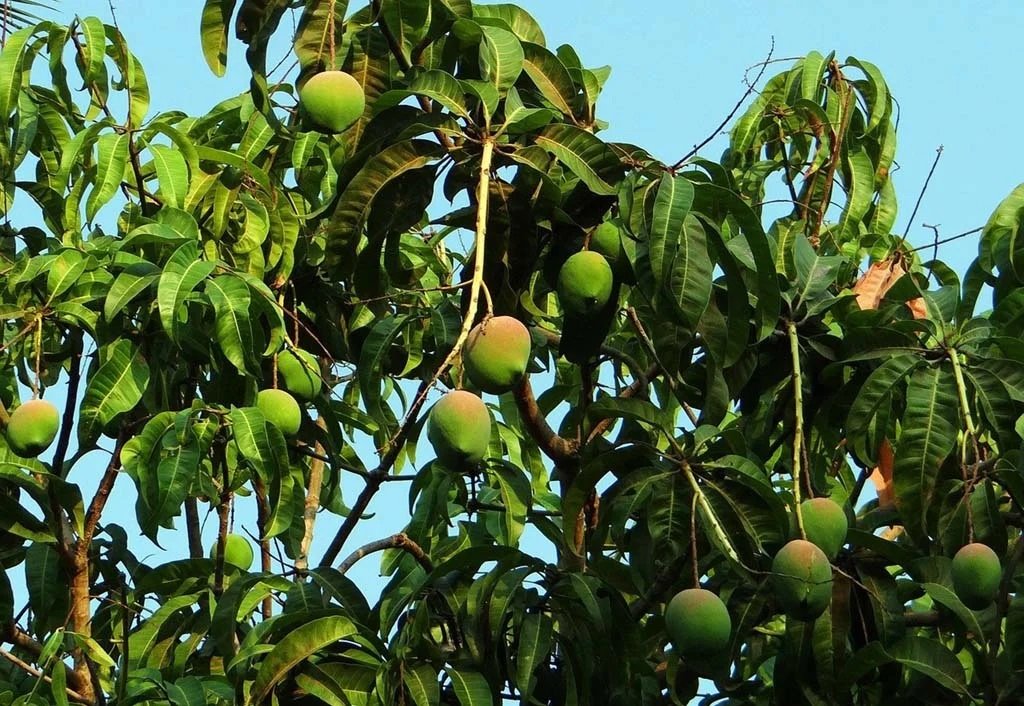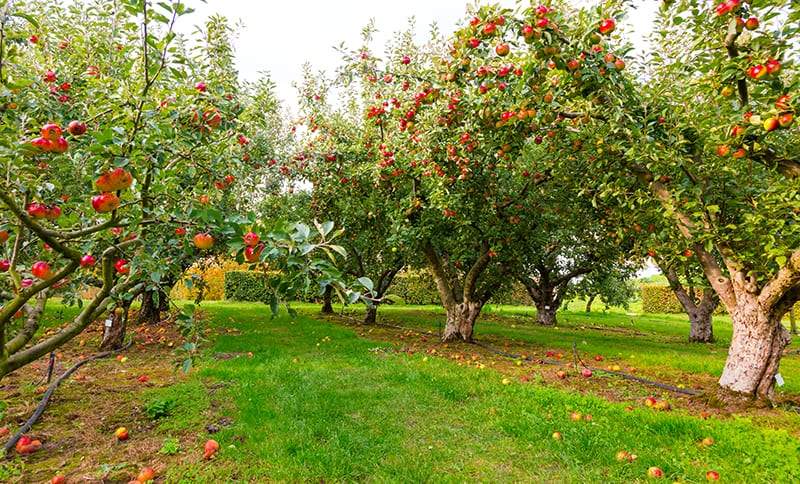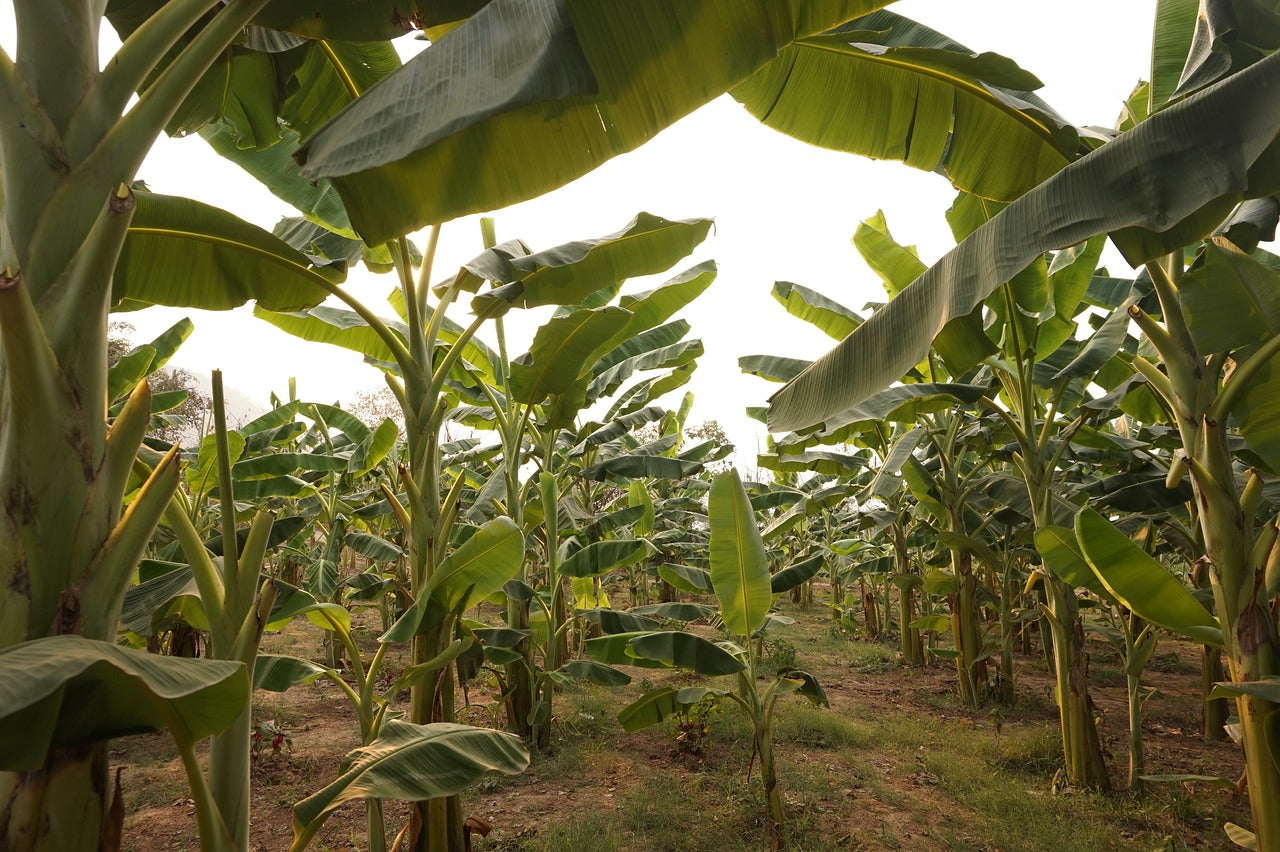- Home >
- Mango Trees
Mango Trees for Sale - Buying & Growing Guide
Do You Know Your Growing Zone? i Growing zones help determine if a particular plant is likely to grow well in a location. It identifies the average annual minimum winter temperatures across the U.S. provided as a map by the USDA.
3 Results
How to Grow Mango Trees
How to plant mango trees
Mangoes thrive in USDA hardiness zones 10-11. They can grow to more than 60 feet tall, so place your tree away from structures and give it adequate room to spread out. Plant in a spot that gets full sun (six to eight hours daily) and has fertile, well-draining soil.
Dig a hole for your mango sapling that is twice as wide and deep as the root ball. Mix some throughly decomposed compost into the bottom of the hole. Unpot your mango and tease out the roots encircling the plant, as these may eventually strangle it. Place the tree in the hole so that the graft union (looks like a small bump or angle a few inches above the root ball) is above ground. Fill in the hole with topsoil that has been enriched with compost.
Tamp down the soil around the trunk to eliminate air pockets and water your mango tree deeply. A good way to do this is to use a soaker hose or set your hose to trickle and place it near the root zone. Monitor your tree for several weeks and water every few days (or more often if it is very dry).
How to achieve maximum results
Mango trees are a little finicky, but they are well worth nurturing because they can provide buckets of fruit while also playing an attractive role in your landscape design. To achieve maximum results, begin by purchasing a variety that is disease and pest resistant. Provide regular monitoring and feeding. Groom the area around your plant carefully to keep it dry and free of disease. Mangoes are not fast-growing plants, so patience is your friend. It takes five to eight years before your tree will produce fruit.
How to Care for Mango Trees
Watering and nutrients
Water your mango regularly if your area is not receiving rain. Saplings need one to two inches of water a week once established. As they get older and develop deeper tap roots, they will need less water. If you are growing a dwarf variety in a container, you may need to water several times a week, especially during warm weather.
For the first two or three years, fertilize your mango seedling with a high-nitrogen, slow-release fertilizer to promote growth. After that, fertilize your outdoor mango tree several times during the growing season with a balanced product designed for tropical fruiting plants. Container-grown mangoes need a light feeding of a balanced fertilizer once a month through the summer, and about once every other month during colder seasons.
Pollination
Mangoes are pollinated through the action of flies, butterflies, and moths, as well as the wind. The trees are monoecious, which means that male and female reproductive organs are on the same tree — so you should have a harvest even if you only have one mango tree.
Pruning
Your main task with mango trees is to monitor the tree carefully for broken or diseased branches and get rid of them immediately. When your tree is a few years old and still fairly small, prune out any congested areas in the tree’s canopy to allow light and air to circulate. Be cautious because mango leaves and branches contain urushiol, which is the chemical in poison ivy that causes a rash. Use care when pruning, and wear gloves to avoid touching the tree more than is necessary.
Pests, diseases, and animals
Common mango pests include thrips, mealybugs, and scales; whiteflies, blackflies, and several varieties of beetles may also attack the tree. We suggest checking with your local county extension agent to see what pests are active in your region. A general-purpose insecticide should handle infestations as needed.
Mango trees are susceptible to anthracnose, a fungal disease that causes leaf spots as well as fruit and blossom rot. To avoid it, keep the area under the tree clear of debris and water at the base of the tree (not overhead). If you suspect that your tree is infested, use a copper fungicide to treat. You can also use a fungicide on verticillium wilt, which causes leaves to wilt and turn brown before dying.
Squirrels, raccoons, and even deer may be attracted to your fruiting mango. If you live in a part of the world with primate populations, monkeys will also feast on mango fruit. Fencing in your tree may help some, although you may need to accept that animals will take a small portion of your harvest, since a full-grown mango tree is too large to net.
Harvesting
Mangoes are ready to harvest three to five months after the tree flowers. The fruit will not all ripen at the same time, so look for mangoes that have changed color from green to yellow or a blush pink. The end of the fruit that is not attached to the tree should be filled out and just starting to soften. It will continue to ripen after picking if left in a warm and dry spot for several days.






